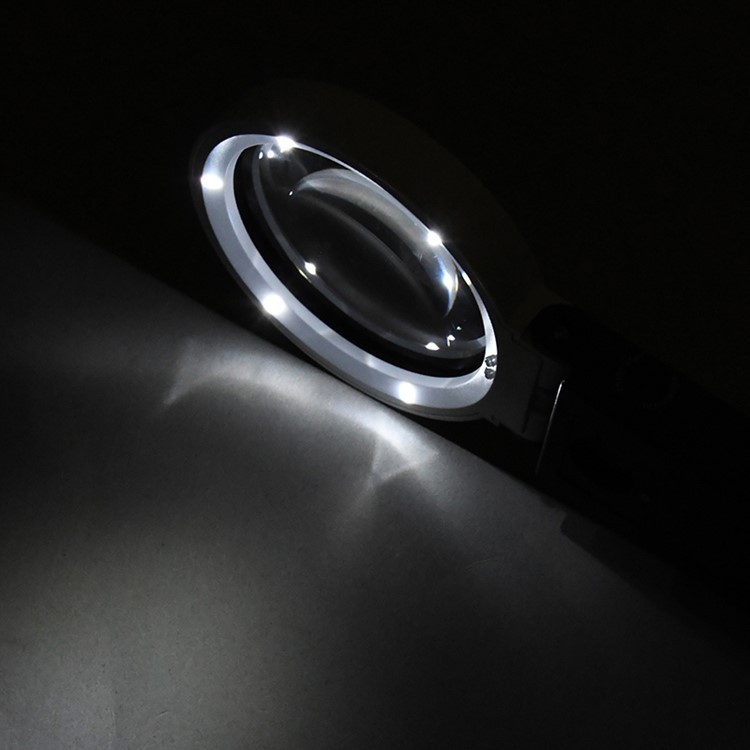Magnifier illumination refers to the built-in lighting features found in many magnifiers. These lights are designed to provide enhanced visibility and clarity when using the magnifier, particularly in situations with low lighting conditions or when dealing with fine details. Here are some key aspects of magnifier illumination:
LED Lighting: The most common type of illumination found in magnifiers is LED (Light-Emitting Diode) lighting. LEDs are preferred due to their energy efficiency, long lifespan, and ability to provide bright and focused illumination. LED lights are typically positioned around the lens or integrated into the frame of the magnifier.
Adjustable Brightness: Some magnifiers offer adjustable brightness settings for their built-in lights. This allows the user to customize the lighting intensity based on their preferences and the specific requirements of the task at hand. Adjusting the brightness can help achieve optimal illumination for comfortable viewing.
Even Lighting: Magnifiers with well-designed illumination systems aim to provide even lighting across the viewing area. This helps to reduce shadows and ensures that the object or text being magnified is uniformly illuminated. Even lighting facilitates clearer visibility and makes it easier to examine details without straining your eyes.
Battery or USB Powered: Magnifier illumination is often powered by batteries, with the magnifier having a compartment to house them. Some models may also have the option of being powered by USB, allowing them to be connected to a computer or a power source. Battery-powered magnifiers offer portability, while USB-powered ones can provide a continuous and reliable power source.
Switch or Button Controls: The controls for the illumination feature are typically located on the magnifier itself. They may consist of switches or buttons that allow you to turn the lights on and off, adjust brightness levels, or activate specialized lighting modes if available.
Specialized Lighting Modes: Certain magnifiers may offer specialized lighting modes to cater to specific needs. For example, some magnifiers may have adjustable color temperature settings, allowing you to switch between warm and cool lighting to suit different tasks or personal preferences. Others may have UV lights for detecting fluorescence or verifying the authenticity of certain materials.









